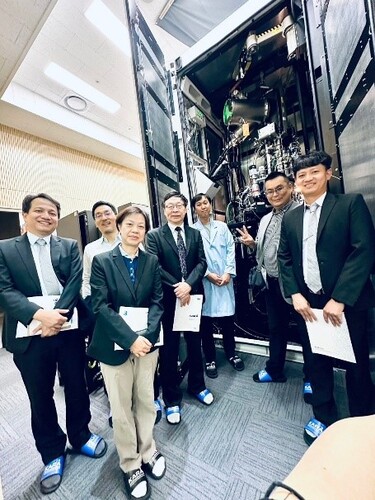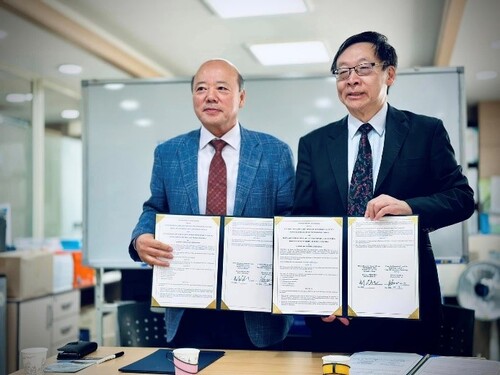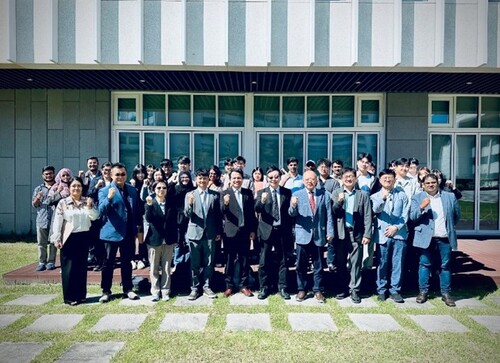Visit to the Department of Materials Science and Engineering at KAIST and the Plasma Bioscience Research Center at Kwangwoon University, Korea.





In May of this year, we invited Prof. Byungha Shin (Department Chair), Prof. Jihun Oh, and Prof. Kibum Kang from the Department of Materials Science at KAIST (Korea Advanced Institute of Science and Technology) to visit our university's Department of Materials Engineering. During their visit, we held a bilateral workshop and toured our Department of Materials Science as well as the Plasma and Thin Film Technology Center. The discussions went smoothly, and both sides expressed interest in further interactions. We agreed to sign a department-level MoU, which was completed via email by the end of May. This visit to KAIST is a reciprocal trip, and a formal signing ceremony will be held. KAIST ranked 56th in the 2024 QS World University Rankings and 21st in the field of Materials Science.
The visit to KAIST was very productive. On September 30, from 10:00 to 10:30 in the morning, the MoU signing ceremony was held, followed by a group photo. Later, Prof. Shin gave us a tour of the Department of Materials Science at KAIST. The space was very spacious and bright, with designated areas for student discussions. The department's shared analytical equipment was, as expected, quite comprehensive. In 2023, the Department of Materials Science at KAIST had 30 faculty members, 131 undergraduate students, 130 master's students, and 237 PhD students. That year, they secured $25.25 million in research funding and published 243 SCI journal papers, with an average impact factor of 15.15.
We also visited the Vice President of KAIST, Prof. Kyoungsoo Kim, who had previously visited our university. During our meeting, Prof. Kim mentioned that KAIST generally supports each faculty member in starting a startup company. KAIST's venture capital initially provides around $200,000 to $300,000 and offers space, which is very beneficial for professors starting their companies. This policy has led to a higher willingness among professors to engage in startups. During this visit, we met two faculty members from the Department of Materials Science who had started their own companies. Although the companies were still small, with about five to six employees, they were still operating. If large enterprises were to invest, these companies could experience explosive growth.
After lunch, Prof. Shin led five of our faculty members to tour the KAIST Analysis Center for Research Advancement (KARA). The name is interesting because the final letter, "Å," refers to the angstrom, the smallest unit of length, equal to 0.1 nanometers. This symbolizes the center’s goal to achieve angstrom-level precision in material analysis. The center indeed boasts world-class equipment, covering all types of material analysis tools, most of which are the latest models. The equipment is operated and maintained by professional researchers or technicians, ensuring both stability and performance.
We then returned to the Department of Materials Science at KAIST to visit Prof. Shin's laboratory. As a gesture of goodwill, we gifted them Taiwan's iconic green-packaged "Kuai Kuai" snacks, wishing for smooth operation of their lab equipment. In the evening, Prof. Shin, Prof. Oh, and Prof. Kang hosted us at a Japanese restaurant, and the atmosphere was very pleasant. Prof. Shin, the department chair, was extremely hospitable and carefully arranged the entire day’s itinerary. We are very grateful for his warm reception.
All of us from the Department of Materials Science at Ming Chi University felt honored to meet world-class scholars and to establish meaningful relationships.
On October 2, we visited the Plasma Bioscience Research Center at Kwangwoon University in Seoul. During this visit, in addition to renewing the MoU between their research center and our Plasma and Thin Film Technology Center, we were warmly received by the center's director, Prof. Eun Ha Choi. She enthusiastically guided us through the center’s plasma technology research. The center has conducted in-depth studies on plasma physics, simulation, analysis, and applications. What left an even stronger impression was the fact that the research center has established a company called PLASADE. Their main product is an atmospheric plasma device that can generate about several tens of ppm of NO in water through optimized parameters, while inhibiting the formation of toxic NO3-. This technology is currently being promoted for agricultural use to improve crop growth rates and resistance to pests and diseases.
Director Jyh-Wei Lee from Ming Chi University also introduced our Plasma and Thin Film Research Center, and both sides engaged in discussions and exchanged ideas.
Supplementary Explanation for Figure 1: A group photo from the MoU signing ceremony between the Department of Materials Science at Ming Chi University of Technology, represented by Department Chair Prof. Chi-Hsien Huang (4th from right), Chair Professor Prof. Jyh-Wei Lee (2nd from left), Distinguished Professor Prof. Ting-Yu Liu (1st from right), Prof. Li-Chun Chang (3rd from right), and Prof. Yu-Ching Huang (2nd from right), and the Department of Materials Science at KAIST, represented by Department Chair Prof. Byungha Shin and Prof. Sung Hoon Kang.
中文:訪問韓國KAIST材料系及光云大學電漿生物科學研究中心
This article is simultaneously published in the 15th edition of the SDGs E-paper.






